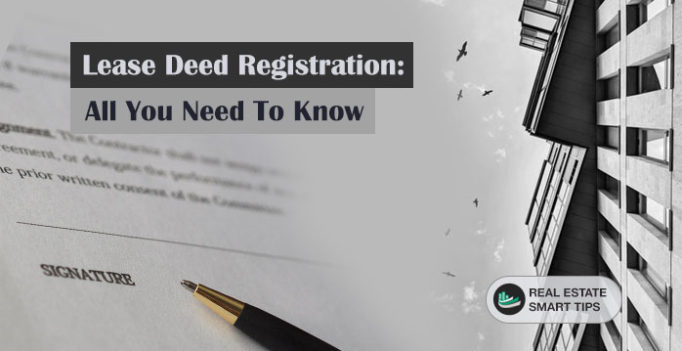A contract wherein the lessee (tenant) agrees to pay a periodic sum of money (rent) to the lessor. This is a Lease Deed / Rent agreement. In particular, the lessee pays this rent for the use of the immovable property. To put in simple words, a lease deed comes into the picture every time an owner rents out his property to a tenant. A lease agreement is made to rent out an Office, shop, Flat, Apartment, Bungalow, Builder Floor, Industrial Site, agricultural lands, farmhouses, etc.
In many cases, we have come across quite a lot of cases where individuals and corporate entities pay no attention to the requirements of payment of proper stamp duty and registration. Accordingly, when disputes take place between the parties because of a deficit in payment of stamp duty; both face problems.
In this write-up, we have attempted to address certain essential aspects in respect of the payment of stamp duty and the registration of leases and the risks involved in failing to do so.
Lease Deed: What is it?
A Lease deed, to put in simple words, is an officially permitted document that lays out the agreed terms and conditions under which the property is leased out. Most importantly, the Lease deed should hold information about the lessor, lessee. Besides, there should be information on the tenure of the lease, lease payments to be paid and other terms to be followed by the lessee and lessor all through the lease term. In particular, as per Section 105 of the Transfer of Property Act, ‘Lease’ refers to the transfer of a right to enjoy the property for a certain time in consideration of a price paid or promised. Furthermore, the lessee pays this amount periodically to the Lessor by the Lessee who accepts the transfer.
Lease Deed: Restrictions of The Lessee
- To begin with, gets the right to enjoy the property but not ownership rights
- Secondly, the Lessee’s right to possession of the property reaches an end upon the cessation of the lease. This is true unless the lease is in time without end.
- The consideration can either be in the form of a one-time payment or as rent at set intervals
- Furthermore, the Lessee cannot enjoy the residual value of a property
- In addition, lease grants only the right to stay and use the property
Indeed, the entire transaction executing the Lease Deed can be broken down into stages. With this in mind, let’s explain.
A Few Stages of a Lease Deed
1. Negotiation Stage
To begin with, this is the very first stage of the transaction. Most importantly, it comes into effect right after the Lessee has identified a property suitable for his use. To put in simple words, the parties involved shall need to talk about the diverse commercial aspects of the deal. To mention a few, duration of the lease, consideration, mode of payment etc. In fact, the spotlight at this stage is more on the commercial phases rather than the legal aspects.
2. Preliminary Documentation Stage
You are done with the commercial aspects of the transaction. Accordingly, the parties involved can get into an Agreement to Lease recording the commercial aspects of the deal. This creation of an Agreement to Lease is certainly, to place the intention of the parties on record.
3. Due Diligence Stage
In particular, the spotlight of this stage is to confirm the Lessor’s title to the property and the Lessor’s capability to end the property by way of the lease in support of the Lessee.
Wrapping up
To put in simple words, there are multiple steps in getting a Rent agreement prepared and registered. Most importantly, you need to understand why we need to pay stamp duty. In fact, you need to be acquainted with what would come about if a lease agreement, which requires registration, is not registered.
Found this blog useful? Please Like & Share. Follow me on Twitter and Facebook page. Accordingly, you’ll be notified each time a new post comes up.


Be the first to comment